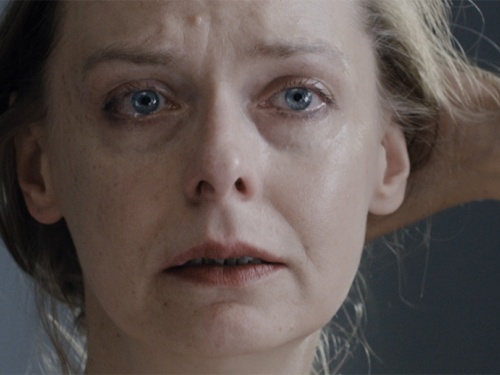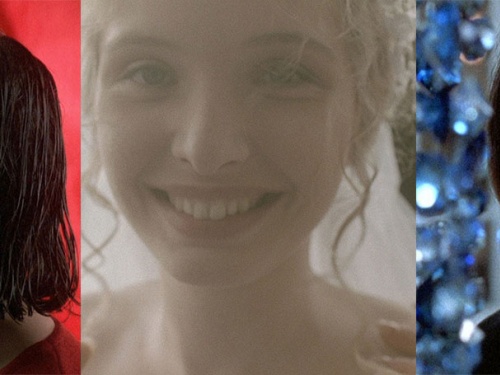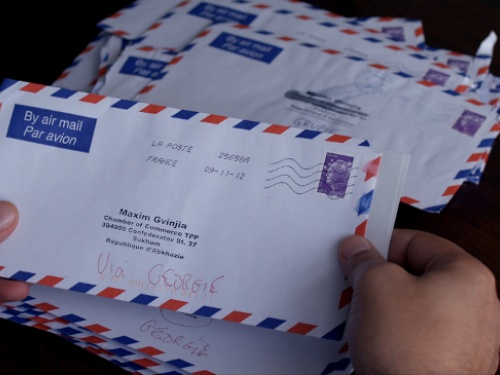Liminal Geographies
The Documentaries of Gianfranco Rosi
Film critic Ben Nicholson explores the cinema of Gianfranco Rosi ahead of the first ever solo retrospective of his films at the ICA.
At the beginning of Federico Fellini’s Roma, the narrator compares the Italian capital’s orbital motorway, the Grande Raccordo Anulare (GRA), to the Rings of Saturn. There is nothing quite so celestial about the road’s treatment in Gianfranco Rosi’s Golden Lion winner, Sacro GRA, but, allowing for a little poetic licence, there’s an elegant correlation to the director’s body of work. In the same way that the rings are a collection of small particles clustered to form something remarkable, so Rosi’s films are an accumulation of tiny fragments; individual moments that can feel unconnected, but which coalesce into something profound. That profundity lies in astutely considered explorations of liminal geographies.
Rosi does not make landscape films in the typical sense. His films are not primarily about the physical landscape but about the interaction between characters and their surroundings. More often than not, these locations are isolated or confined and it’s impossible not to see thematic tissue connecting how spaces are employed as socio-political power structures: to restrict and to marginalise. Such preoccupations are not found clamouring at the centre of Rosi’s films, but on the periphery; informing, contextualising and shaping his ethnographic observations.
Rosi’s films are an accumulation of tiny fragments; individual moments... which coalesce into something profound.
This has been the case since his 1993 debut, Boatman. While the aesthetic has visibly evolved over the intervening years, there is a familiarity to his style and motifs that link his filmography, with 2010’s El Sicario, Room 164 appearing the only outlier. A ubiquitous promotional image from his most recent film, the Berlin Golden Bear winner Fire at Sea, is of a boy sat on a boat with the prow stretching into the water behind him. It’s an almost identical composition to a recurring one in Boatman, framing his main subject Gopal against the waters of the Ganges. Shot on evocative monochrome 16mm, it is a relatively loose survey of life on and around the river at Varanasi. From the hull of Gopal’s boat, Rosi captures comings and goings, from the economic to the ceremonial. As well as studying those on social and geographical margins, Rosi also regularly returns to the traditional sense of the word ‘liminal’: the boundary between life and death. This is clearly seen in Boatman as funerary rituals plunge bodies into the water while Gopal’s boat drifts by. Rosi speaks briefly to a variety of passing characters, from locals to wanderers (from as far afield as New Zealand and his native Italy) who have landed in India for all manner of reasons. Within the boat, Gopal tells of how Rama’s ferry ride with a member of the Mallah (boatmen) caste raised their standing to be ‘touchable’ by those around them. It’s a tale that starkly illustrates the segregation of Gopal’s apparently free-floating kingdom.
There’s a similar sense of contradiction in his follow-up feature, Below Sea Level. Moving from Uttar Pradesh to California, it adopts a similarly relaxed style and observes the inhabitants of the makeshift community of Slab City in the Sonora Desert. With monikers like ‘Insane Wayne’ and ‘Bulletproof’, they’re a group of self-imposed exiles in a fleet of ramshackle mobile homes. Some are philosophical about the autonomy of their lifestyle. Others open up about historical catastrophes and the lack of opportunity that has driven them to this ragged edge, on the brink of oblivion.
His films are not primarily about the physical landscape but about the interaction between characters and their surroundings.
By the time of Sacro GRA and Fire at Sea, Rosi had largely done away with the direct-to-camera conversations that pepper Boatman and Below Sea Level. Instead, these are meandering and highly observational journeys around specific locales. Sacro GRA boasts a cast of characters curious enough to rival Below Sea Level, this time living and working around—and beneath—the motorway that acts both as city limit and a tether between these denizens of Rome’s edgelands. Fire at Sea follows a young boy, Samuele, as he stalks his island home of Lampedusa with a slingshot. The underlying message though, is probably Rosi’s most potent. What is ostensibly a contemplative coming of age story about a boy with a lazy eye is set against the backdrop of the ongoing migrant crisis lapping at the island’s shores. Samuele acts as a metaphor for the collective blinkered vision of the local people (and those of wider Europe), distracted from the unthinkable tragedy occurring offshore. The coast here acts once again as a boundary; one of vast political power and mortal consequence.
Rosi’s one feature that defies his typical trappings is El Sicario, Room 164, which is based on Charles Bowden's article for Harper's Magazine. It’s a visually restrained interview with a veiled ex-hitman for a Mexican drug cartel, confined to a hotel room in which he previously committed torture and murder. Besides a few brief cutaways to the streets of Juárez, the chief visual intrigue comes in the form of doodles that the ‘sicario’ uses to illustrate his testimony. Despite only rarely venturing into the city itself, the monologue equally manages to conjure a sense of the physical, social and economic geographies of the place – and the knife-edge nature of one of the most dangerous cities in the world. ■
This article is posted in: Articles, Film
Tagged with: Gianfranco Rosi, Cinema, Documentary Cinema, Film Criticism








